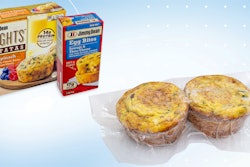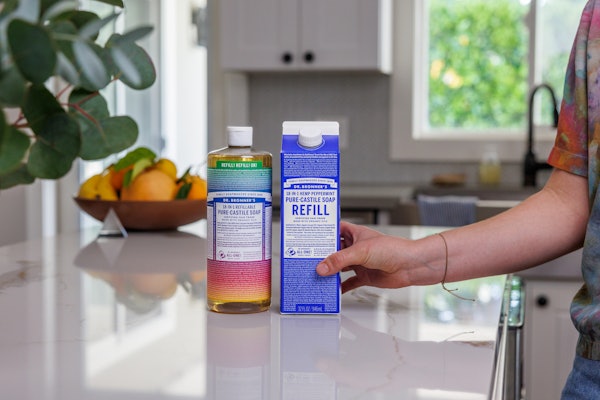
Flexible packaging is a structural characterization referring to a material’s ability to bend and to fold, therefore, to flex. Flexible packaging, compared to rigid packaging like glass and metals, is lightweight. That inherent property results in lower transportation costs for brand owners and convenience-of-handling for consumers. Barrier protection, however, is not an inherent property of flexible packaging. It needs to be bestowed through engineered means.
The need for barrier packaging derives from the need to protect the contained products from the harmful effects of gases, moisture, and light (UV). The aforementioned elements can reduce the quality, efficacy, performance, and aesthetics of products such as food and beverage, pharmaceuticals, medical devices, and cosmetics, among others.
Flexible packaging provides barrier, either as a monolayer or a multilayer substrate. The associated technologies include extrusions, coextrusions, laminations, and coatings, producing structures such as bags, pouches, and thermoforms. The packaging supplier industry segment known as converters offer a wide and imaginative range of offerings. But how does a packaging user decide?
The protection function of flexible packaging (as with any other type of packaging) always should reflect the needs of the product. A given product’s susceptibility to harm establishes the type and the level of barrier that the flexible packaging must provide. As logical and straightforward as that might sound, decisions are complicated by various considerations and chief among them is the targeted shelf life/service life. It sets ramifications throughout the supply chain, notably on inventory levels.
It’s easier to decide on the type of barrier needed than it is to decide on the amount. A powder, for example, needs protection from moisture—a self-imposed requirement. How much protection and for how long, however, are less obvious. Too little protection (underpackaging) and too much protection (overpackaging) are both costly. The former results in consumer dissatisfaction, and the latter results in reduced margins. In the tradition of Goldilocks, comfort resides in the optimal middle. Following are some of the main ways to get there, material-wise.
• Aluminum foil. Foil is the best flexible barrier against gases, moisture, and light. The degree of protection mainly depends on the foil’s thickness, which in turn affects cost. On the debit side, foil is susceptible to pinholes, flex-cracking, and abrasion. Due to its inability to seal, along with its various susceptibilities, foil frequently is sandwiched within laminations. When, however, foil is a visible surface layer, it imparts a sheen (especially when lacquered) that enhances aesthetics and shelf appeal.
• Metallized films. These structures are the closest rivals to aluminum foil as barriers to gases, moisture, and light. Any film can be metallized (the depositing of a layer of vaporized metal). The task, therefore, is to choose a film of certain inherent barrier properties, then to enhance them with aluminum metallizing. To illustrate, polyethylene terephthalate (PET), polypropylene (PP) in its various orientations, and polyamide (nylon) are modest barriers against gases and moisture, and negligible barriers against light. When metallized, though, their barrier properties increase by multiples.
• Glass-coated films. Silicon oxide, a modification of silicon dioxide (or sand, the main component of glass), is vacuum-vaporized then deposited as a thin coating. Silicon oxide imparts barriers associated with glass, namely against gases and moisture, but not against light (though transparency and the ability to see the contents can be an otherwise advantage). The thusly coated films are best laminated to protect the coating; after all, glass is fragile. Because of cost, glass-coated films see high-end, high-margin applications, such as for some medical devices and some specialty food packaging.
• EVOH. Ethylene vinyl alcohol (EVOH), a copolymer, is a barrier against gases. It’s used in multilayer structures, such as coextrusions and laminations, and can enhance the relatively low gas barriers provided by polyolefins. As another example, nylon’s intermediate barrier against gases is increased by EVOH. But EVOH is hydroscopic, and its barrier properties against gases are reduced in a high-humidity environment. That’s why an EVOH-containing structure might include a material serving as a moisture barrier.
One would be remiss not to include sustainability in the discussion. Source reduction, minimizing converting steps, and conserving energy usage are prime pursuits. Structures that include paper must include a coating or a film, because paper cannot otherwise be sealed. Monolayer film structures—polyethylene bags, for example—are sourced from non-renewables and have poor recycling rates. Multilayer structures are difficult (an understatement) to separate into individual layers for recycling. Even those converters that promote their offerings as compostable must admit that the infrastructure for commercial composting has a long way to go.
All of that is par for the course. No packaging has sustainability bona fides that isolate it from criticism. It’s all about trade-offs and arguments about a net environmental footprint. What’s not subject to argument, however, is that barrier flexible packaging is popular with consumers. That fact cements its continued use, now and for the foreseeable future.
Sterling Anthony, CPP, consults in packaging, marketing, logistics, and human-factors. A former faculty member at the Michigan State University School of Packaging, his contact info is:100 Renaissance Center, Box-176, Detroit, MI 48243; 313/531-1875; [email protected]























